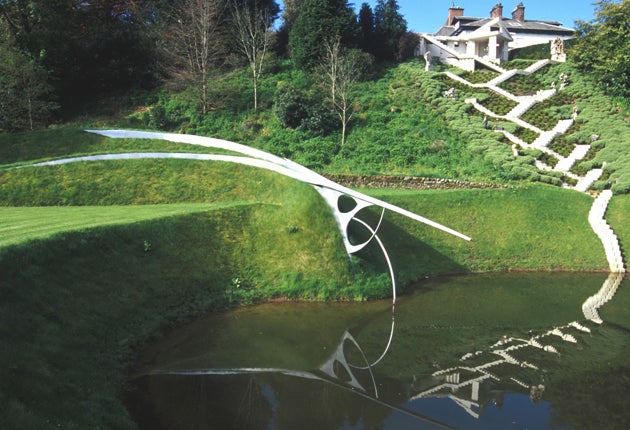The science of gardening (as explained to renowned physicists)

Your support helps us to tell the story
As your White House correspondent, I ask the tough questions and seek the answers that matter.
Your support enables me to be in the room, pressing for transparency and accountability. Without your contributions, we wouldn't have the resources to challenge those in power.
Your donation makes it possible for us to keep doing this important work, keeping you informed every step of the way to the November election

Andrew Feinberg
White House Correspondent
It has been described as probably the most important garden in Europe but is open to the public on only one day a year. Now, however, the Garden of Cosmic Speculation developed by American-born landscape architect and historian Charles Jencks may be replicated at the Geneva-based centre of CERN, the European Organisation for Nuclear Research.
The garden, at Jencks' private home at Portrack House in Dumfries and Galloway, Scotland, is designed to represent themes and ideas rather than what many see as the real purpose – to mount a horticultural display.
Jencks, who was born in 1939, set it up in conjunction with his late wife, Maggie Keswick, the founder of the Maggie's cancer caring centres, in 1989 and has been adding to it ever since. The themes explored in the garden include DNA, the sense and the concepts of space and and time.
Jencks has used twisting, undulating landforms and terraces created from the landscape itself. His wife was responsible for the design of the lakes.
Yesterday, Jencks played host to physicist Professor Peter Higgs and director-general of CERN, Professor Rolf-Dieter Heuer, to discuss the possibility of creating a similar concept in Geneva.
Jencks was born in Baltimore to a Scottish mother from Fife and first studied English literature at Harvard University – only later going on to gain an MA in architecture from the Graduate School of Design in 1965. He also has a PhD in Architectural History from University College London.
He moved to Scotland in the Sixties and has lived there ever since. Widely respected as a leading figure in British landscape architecture, his work is inspired by fractals, genetics, chaos theory, waves and solitons. These themes are all explored at his Dumfries garden.
Garden design enthusiasts, while respecting the fact that the garden is part of Jencks' own home, lament the fact that it is open to the public for just one day a year. As one architect observed: "When it is (open), the interest among gardeners is so great that local roads have been blocked by traffic." A replicated attraction in Geneva could therefore prove extremely popular.
Subscribe to Independent Premium to bookmark this article
Want to bookmark your favourite articles and stories to read or reference later? Start your Independent Premium subscription today.
Join our commenting forum
Join thought-provoking conversations, follow other Independent readers and see their replies
Comments